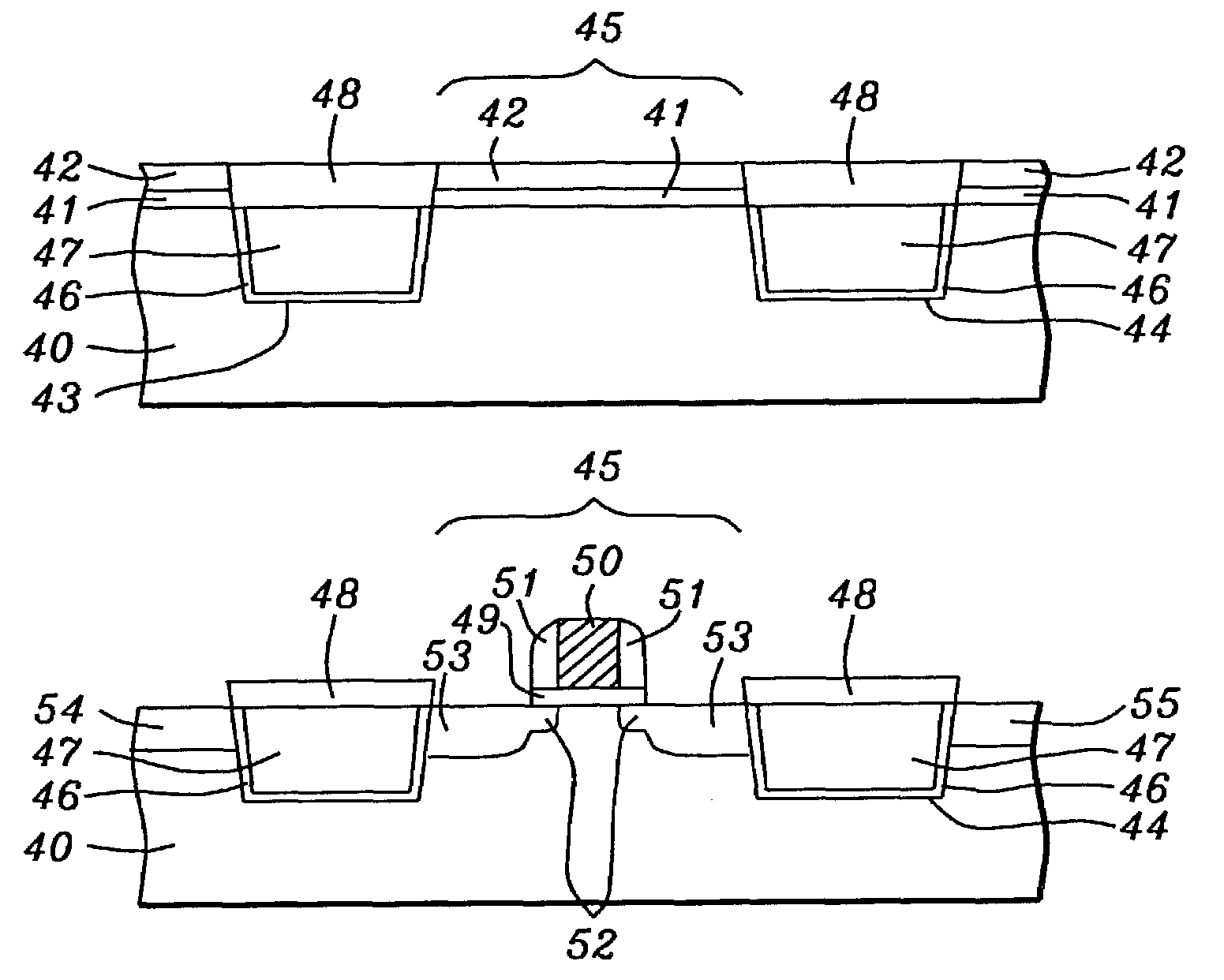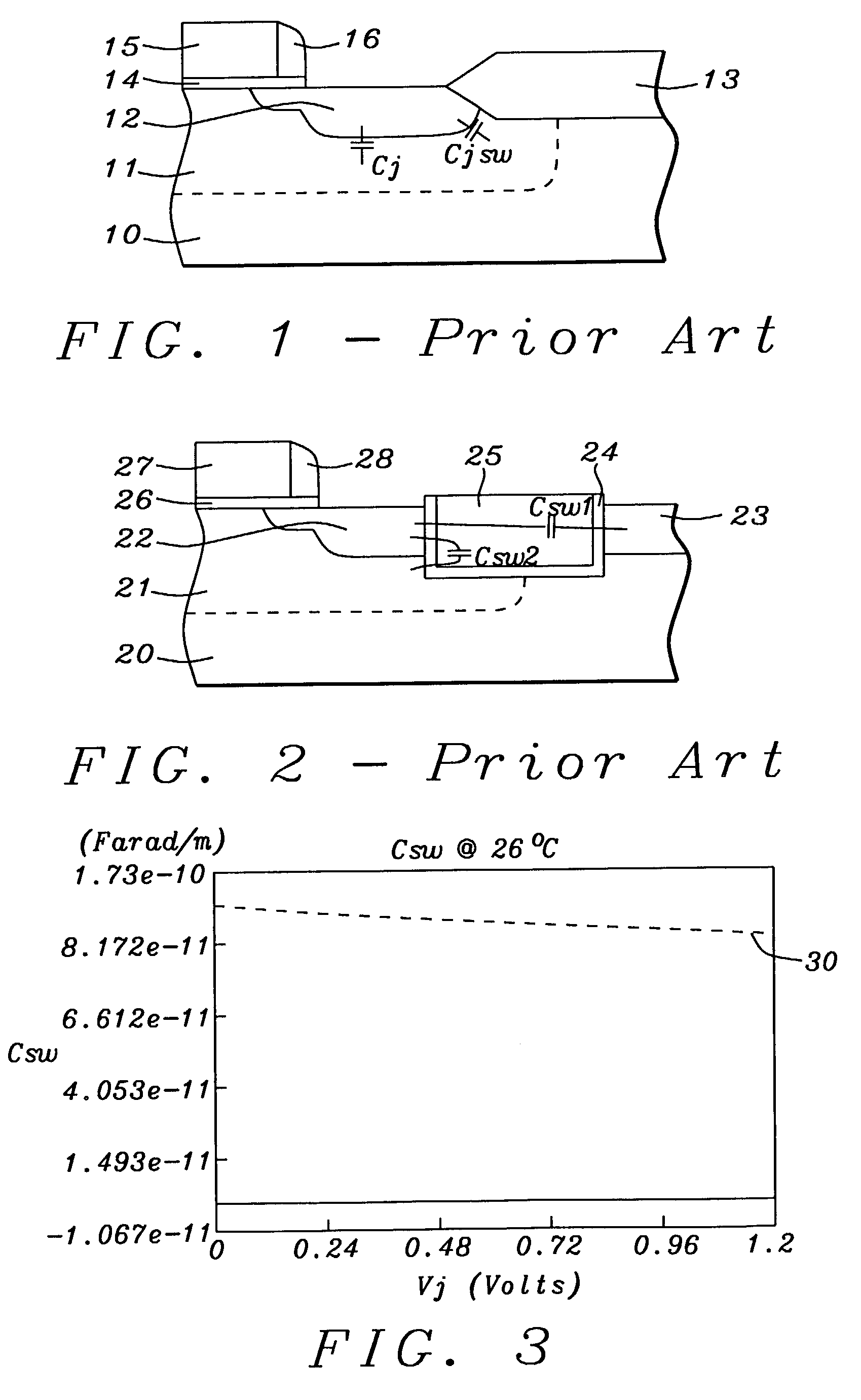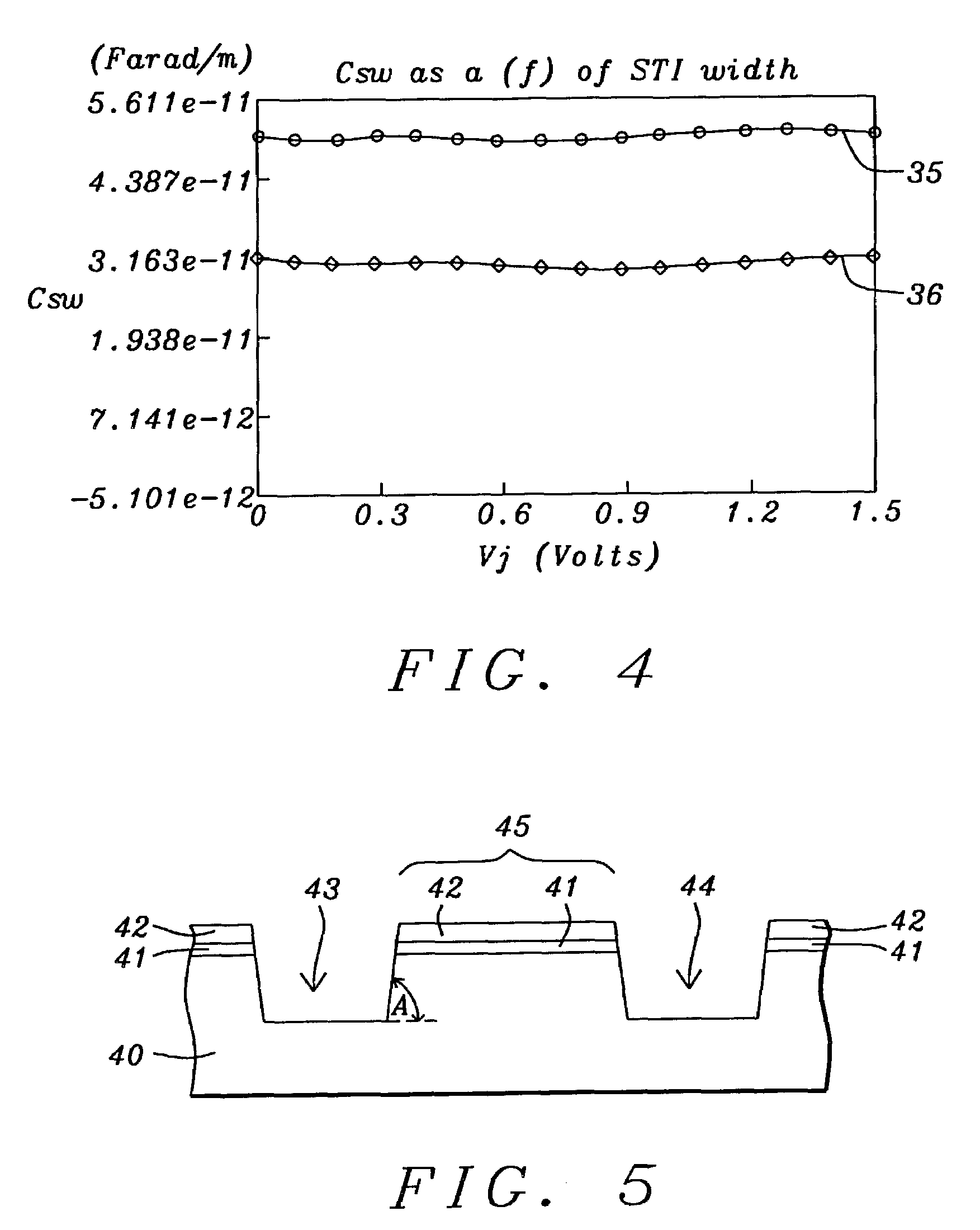Shallow trench isolation structure with low sidewall capacitance for high speed integrated circuits
- Summary
- Abstract
- Description
- Claims
- Application Information
AI Technical Summary
Benefits of technology
Problems solved by technology
Method used
Image
Examples
Embodiment Construction
[0033]The present invention relates to a method of forming STI structures with low sidewall capacitance and having a width of less than about 0.5 microns that are used in fabricating a MOS device. The invention is also a shallow trench isolation structure with improved properties for isolating neighboring devices.
[0034]The invention will be described with reference to the drawings which are not necessarily drawn to scale. Referring to FIG. 5, a substrate 40 is provided that is typically silicon and which can be doped or undoped but may optionally be based on a silicon-germanium, gallium-arsenide, or silicon-on-insulator technology. Substrate 40 may contain a substructure (not shown) that includes active and passive devices. Trenches 43, 44 are fabricated by first depositing a pad oxide layer 41 on substrate 40. Pad oxide layer 41 may be thermally grown or deposited by a chemical vapor deposition (CVD) process. A silicon nitride layer 42 is then deposited by a CVD or plasma enhanced ...
PUM
 Login to View More
Login to View More Abstract
Description
Claims
Application Information
 Login to View More
Login to View More - R&D Engineer
- R&D Manager
- IP Professional
- Industry Leading Data Capabilities
- Powerful AI technology
- Patent DNA Extraction
Browse by: Latest US Patents, China's latest patents, Technical Efficacy Thesaurus, Application Domain, Technology Topic, Popular Technical Reports.
© 2024 PatSnap. All rights reserved.Legal|Privacy policy|Modern Slavery Act Transparency Statement|Sitemap|About US| Contact US: help@patsnap.com










